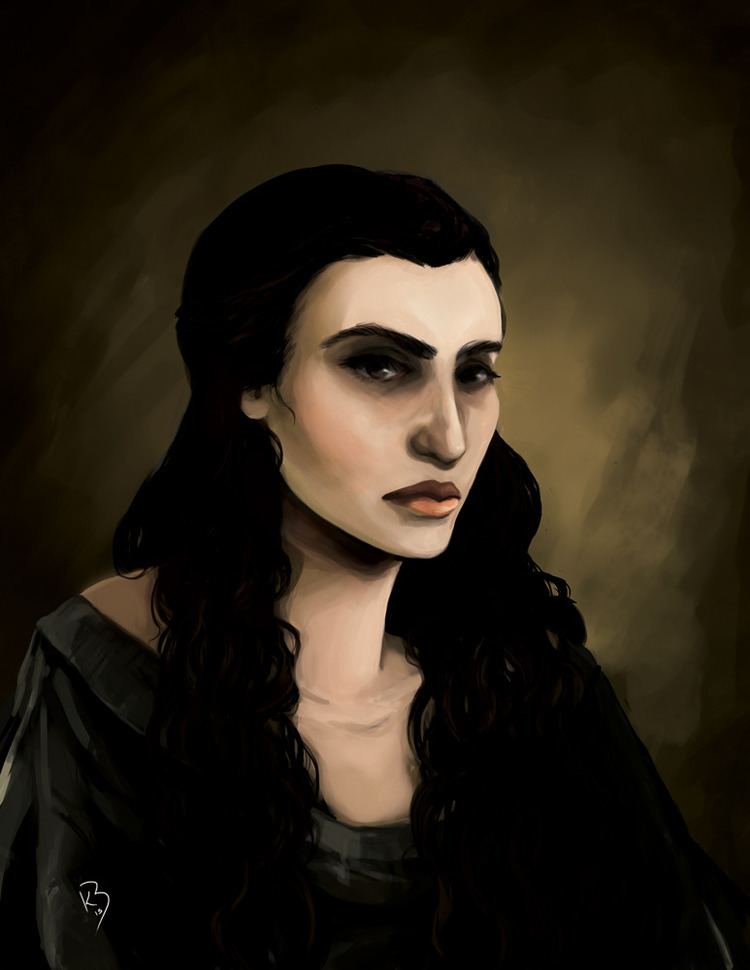Name Eibhlin Ni Role Poet | Died 1800 | |
 | ||
RTÉ: THE LOST WORLD OF ART Ó LAOGHAIRE
Eibhlín Dubh Ní Chonaill (also known as Eileen O' Connell, c. 1743 – c. 1800) was an Irish noblewoman and poet, the composer of Caoineadh Airt Uí Laoghaire.
Contents
- RT THE LOST WORLD OF ART LAOGHAIRE
- The Death of Art OLeary
- Life
- Burial of Art
- Aftermath of Arts death
- References
Eibhlín Dubh Ní Chonaill was a member of the Muintir Uí Chonaill of Derrynane, County Kerry, being one of twenty-two children of Dómhnaill Mór Ó Conaill and an aunt of Daniel O'Connell. She first married at age fifteen, but the marriage was childless and her elderly husband died after only six months.
The Death of Art O'Leary
Life
In 1767 she fell in love with Captain Art Ó Laoghaire of Rathleigh, Macroom, County Cork, as he rode past on a dark white steed, the peerless, whose forehead bore a snow-white star. He had recently returned from service in the Hungarian Hussars. Eileen was 23; she had been married to "old O'Connor of Firies" when she was 15, and widowed within six months of that marriage. With the marriage against the express wishes of her family, Art and Eibhlin eloped, marrying on 19 December 1767 and settled down to life at Rathleigh where they lived with Art's father, Cornelius Ó Laoire, having five children, three of whom died in infancy. She was pregnant at the time of Art's death.
Art Ó Laoghaire (O'Leary) was a Roman Catholic, one of the few surviving Catholic gentry. The anti-Catholic Penal Laws in force in Ireland during the 18th century made it impossible for 95% of the population to receive an education or have a career in their own country. Ó Laoghaire had been educated on the Continent and served as a captain in the Hungarian Hussars, a Regiment of Empress Marie Theresa's Army of Austro-Hungary. As would befit a well-regarded soldier, aristocrat and husband and father, the epitaph on his tomb reads "Lo! Arthur Leary, generous, handsome, brave, / Slain in his bloom, lies in this humble grave."
Art had a long-running dispute with Abraham Morris (or Morrison) of Hanover Hall, who was Sheriff of Cork ("dirty treachorous Morris", "Morris ghránna an fhill"). Because of the Penal Laws, all Irish Catholics had to endure severe restrictions on employment, trade, ownership of property and the practise of their religion. Lack of opportunity in Ireland resulted in thousands of Irish men and women leaving for Europe and America; indeed, this was why Art had sought military service in the first place. Morris vigorously attempted to enforce these laws, while Art made regular attempts to overcome them, resulting in extremely bitter and personal enmity between the two.
The dispute came to a head in 1773 when Morris offered Art five pounds for his horse; according to the Penal Laws, Catholics were proscribed from owning horses worth more than five pounds, so Morris was entitled to do this. Art refused, and went on the run. Morris was able to use his position as a Protestant, and as sheriff, to have Ó Laoghaire outlawed. A price of 20 guineas was put on his head. Once proclaimed an outlaw, he could be shot at sight quite legally.
Ó Laoghaire attempted and failed to ambush Morris at Millstreet and soon after was shot at Carraig an Ime. His mare raced into Rathleigh, riderless, soaked in blood. Eibhlín Dubh mounted the mare and galloped back to Carraig an Ime, where she found Art's body.
Eibhlín Dubh Ní Chonaill, Ó Laoghaire's "Dark Eileen", composed a 390-line lament mourning Ó Laoghaire's death and calling for revenge. The Caoineadh was composed by Eibhlín Dubh ex tempore and became part of the Irish oral tradition (it was not written down until many years later). It has been described as "the most remarkable set of keening verses to have survived." A number of Irish writers have attempted to capture her grief and rage in translating the lament, including Frank O'Connor, John Montague, Thomas Kinsella and Eilis Dillon.
Burial of Art
Initially Ó Laoghaire was buried by Eibhlín in the Old Cemetery of Cill na Martra (Tuath na Dromann), near to Dundareirke Castle. His family wished him to be buried in Kilcrea Friary, but burial in monastic ground was forbidden at that time under the penal laws. His body was moved temporarily to an unconsecrated field adjacent to the Friary. When it became legally possible, his final interment in the sacred grounds of Kilcrea Friary took place. Art was buried a tomb that bears the following inscription:
Lo Arthur Leary
Generous Handsome Brave
slain in His Bloom
Lies in this Humble Grave
Died May 4th 1773 Aged 26 years.
Aftermath of Art's death
On May 17, 1773, a Coroner's Inquest produced a verdict that Abraham Morris and the party of soldiers were guilty of the wilful and wanton Murder of Art Ó Laoghaire.
On July 17, 1773, O'Leary's brother Cornelius attempted to murder Abraham Morris, then fled to America. Morris recovered from the shots, but they were considered to have shortened his life. (He died in September 1775.)
On September 4, 1773, Morris submitted himself to trial by his peers, the local Magistracy, and was found innocent of any crime by those Gentlemen. Green, who fired the fatal shot, was later decorated for gallantry.
